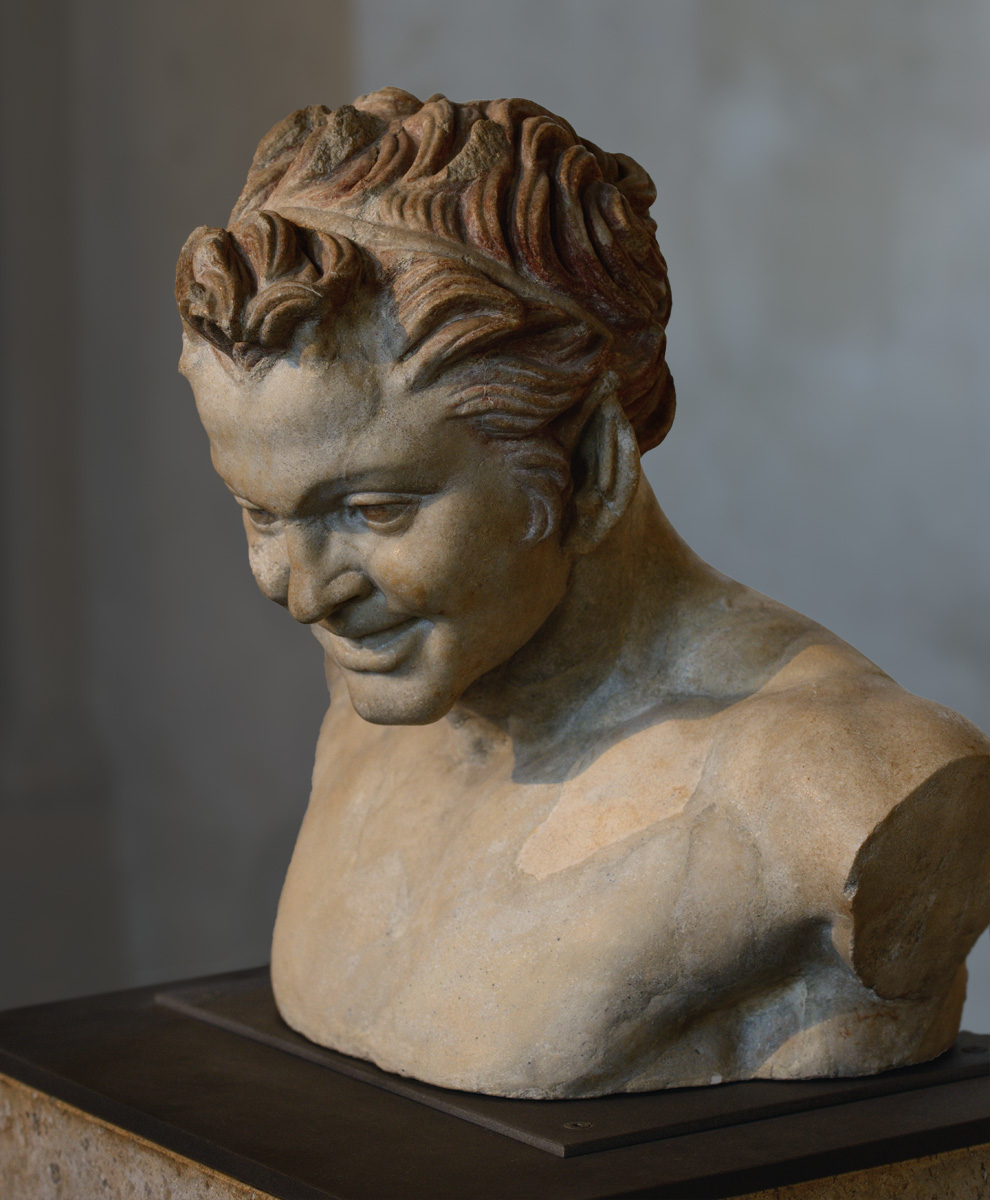
Part of a roman copy of 1st—2nd cent. CE after a Greek marble or bronze model of the 2nd century BCE.
H. 38 cm. Inv. Nos. LL 308 / Ma 528.Paris, Louvre MuseumPhoto by Ilya Shurygin
Bust of a satyr, called the “Faun of Vienne”.
Part of a roman copy of 1st—2nd cent. CE after a Greek marble or bronze model of the 2nd century BCE.
H. 38 cm.
Paris, Louvre Museum.
Only the bust of what was originally a full-length statue survives. The work is a Roman copy (see Ma 395 in the same room) of a statue of the “Invitation to the Dance” group in which a satyr-musician appears to be inviting a young nymph seated on a rock to dance.
The original group, today lost but known to us from images on coins, may date from the 2nd century BC. The Louvre figure’s anecdotal and picturesque character is typical of the “rococo” trend in Hellenistic art. This type of satyr figure, sometimes shown alone, was popular with well-to-do Romans as a garden decoration.
The bust has been reassembled from several fragments. Some of the missing areas have been filled in with plaster. Traces of red paint on the hair, the eyebrows and the eyes.
(http://cartelen.louvre.fr/cartelen/visite?srv=car_not_frame&idNotice=907)